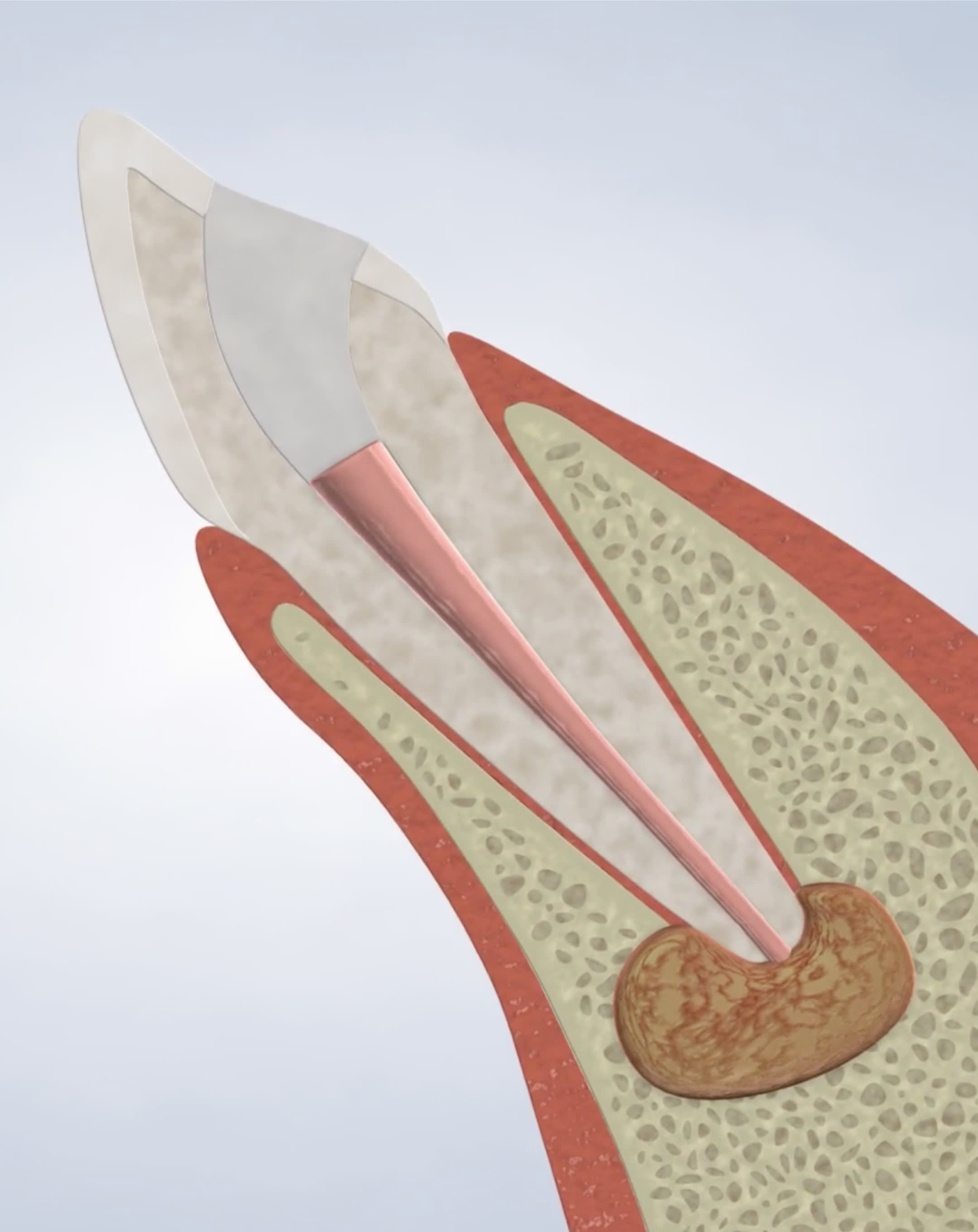Apicoectomy
Save Natural Teeth With Root End Surgery
As oral health experts, we make every attempt we can to save your natural teeth. One type of dental procedure that can help preserve natural teeth is an apicoectomy, which we perform if root canal therapy was unsuccessful at fully removing the infection. Our surgeons perform the apicoectomy procedure in the comfort of our offices and offer a variety of anesthesia options to ensure a comfortable and positive oral surgery experience. Contact Akeso Oral, Facial & Dental Implant Surgery today in Columbia, Catonsville, Lutherville, and Westminster, MD, for a consultation with our oral surgeons and to receive a custom treatment plan for your oral health needs.
What Is an Apicoectomy?
Root canal therapy is often an effective way to remove infected tooth roots. In some cases, however, the infection persists after root canal therapy and an apicoectomy is performed in an attempt to save the tooth. The purpose of an apicoectomy is to eliminate the infection to avoid extraction.
Also known as root end surgery, an apicoectomy involves removing the apex, or root tip, and sealing the root to prevent further infection. The apex is where nerves and blood vessels enter the tooth, providing blood to the tooth’s crown. When the soft tissue around a tooth’s root is infected or inflamed, it can cause severe pain. If left untreated, infected roots can damage or infect other teeth and cause the jaw bone to deteriorate.
What’s the Difference Between a Root Canal and an Apicoectomy?
Root canal therapy focuses on treating infection and inflammation in the inner pulp of a tooth. During a root canal procedure, your dentist will open the tooth, remove the infected pulp, clean the area, then fill and seal it. An apicoectomy, on the other hand, only focuses on the tip of the root and is performed after a root canal if infection is still present.
The Apicoectomy Procedure
During your first visit, we will take 3D scans of your teeth to evaluate your oral health and plan for the apicoectomy procedure. You can choose from a variety of anesthesia or sedation options for your comfort, including local and general anesthesia, laughing gas, and IV sedation. We will help you select the right option based on the complexity of the procedure and your level of anxiety.
Your oral surgeon will make a small incision at the base of the gum to expose the infected tooth root. A tiny part of the jaw bone may need to be removed to expose the root. The root tip and any infected surrounding tissue are removed, and the root is sealed with a filling material. Sutures are placed to close the incision and you will go home the same day as your procedure.
Undergoing an apicoectomy to treat an infected tooth root is often the last attempt to save a tooth before extraction is the only remaining option. If your tooth is unable to be saved, we can discuss tooth extraction and your options for replacing the tooth, such as a dental implant.
Types of Anesthesia
There are many types of anesthesia and sedation options available to you.
Apicoectomy in Columbia, Catonsville, Lutherville, and Westminster, MD
Our team at Akeso Oral, Facial & Dental Implant Surgery is dedicated to improving your oral health and providing a truly exceptional patient experience. If you have had a root canal and the infection persists, we invite you to contact our office in Columbia, Catonsville, Lutherville, or Westminster, MD, to see if an apicoectomy can help treat the infection and save your natural teeth.
Hear From Our Patients
Committed to Patient Care & Clinical Excellence
As a patient at Akeso Oral, Facial & Dental Implant Surgery, you can expect to receive the highest level of care from a team centered around your needs. We proudly serve patients of all ages in the Baltimore-Washington metropolitan areas and invite you to contact us to schedule your appointment.





